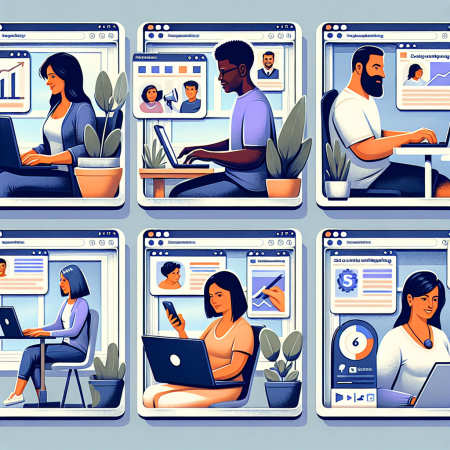6 Things You Didn’t Know You Could Do With Driving Website Traffic
6 Things You Didn’t Know You Could Do With Driving Website Traffic
- Maximize Your Conversion Rates
- Discover New Market Opportunities
- Engage Your Audience
- Boost Your SEO Ranking
Maximize Your Conversion Rates
Alright, so you’ve got traffic coming to your website, but what now? You see, driving traffic is awesome, but if that traffic isn’t converting, then it’s just numbers on a screen. Here’s the deal, maximizing your conversion rates is like turning those casual visitors into loyal customers.
First, you need to understand your audience. I can’t stress this enough – know your audience like the back of your hand. What are their pain points? What solutions are they looking for? Tailoring your content to address these aspects can be a game changer.
Secondly, make sure your website design is user-friendly. A cluttered homepage or a confusing navigation system would only irritate your visitors. Make the user journey as smooth as possible. From landing on your page to making a purchase, every step should be efficient and enjoyable.
Discover New Market Opportunities
This one’s a hidden gem! By closely analyzing the traffic drawn to your website, you can uncover new market opportunities. It might come as a surprise, but sometimes your traffic can reveal interests or needs that you haven’t tapped into yet.
Look at where your traffic is coming from: Are there unexpected locations or demographics? If you see a trend, it’s time to consider expanding your product or service offerings to cater to these new potential customers. For example, if a lot of traffic is coming from a region you hadn’t originally targeted, look into offering localized services or products.
Another way to utilize these insights is through affiliate marketing. If you notice your audience enjoys certain related products, you can partner with those businesses. You not only add value to your users but also tap into an additional revenue stream.
Engage Your Audience
Let’s dive into engagement. Having people visit your site is great, but keeping them engaged? Now that’s a whole different ball game. There are endless ways to keep your audience hooked, and I’ll share a few strategies that have worked wonders for me.
Creating compelling and interactive content is key. Consider adding quizzes, polls, or interactive infographics. These not only make your content more engaging but also provide valuable insights into your audience’s preferences.
Think about nurturing your audience through a consistent email marketing strategy. Newsletters, special offers, or exclusive content can keep your audience engaged and coming back for more. Remember, the goal is to build a community around your brand.
Boost Your SEO Ranking
Lastly, let’s talk about SEO. If you’re getting great traffic, you’re already doing something right on the SEO front, but let’s take it up a notch. The more traffic and engagement your site gets, the better your SEO ranking will be. But how do we capitalize on this?
First, focus on keeping your content fresh and relevant. Search engines love updated content. Regularly posting blogs, articles, or other content helps signal to the almighty Google that your site is alive and kicking. More so, it keeps visitors coming back.
Second, utilize internal linking to keep people on your site longer. This means linking your articles to other relevant content within your website. It not only improves the user experience but also reduces the bounce rate, which is a positive signal for search engines.
Frequently Asked Questions
1. How can I understand my audience better?
Get to know your audience by conducting surveys, interacting with them on social media, and analyzing data from traffic analytics tools. Understanding their needs, preferences, and pain points is crucial.
2. What are interactive content examples?
Examples of interactive content include quizzes, polls, infographics, and interactive videos. These types of content can significantly enhance user engagement.
3. How do I find new market opportunities?
Analyzing your traffic data is a great start. Look for trends in geographic locations, demographics, or interests that you haven’t yet tapped into. Market research and customer feedback can also provide valuable insights.
4. Why is internal linking important for SEO?
Internal linking improves the user experience by guiding visitors to other relevant content on your site. It also helps reduce the bounce rate and improve your SEO ranking by allowing search engines to better index your site.

